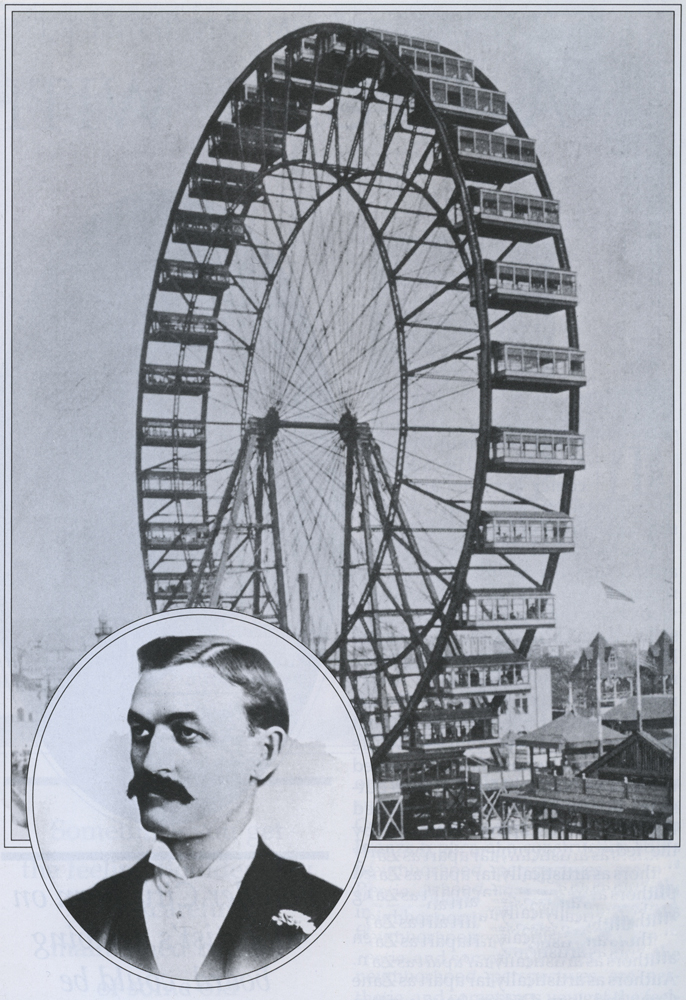Yesterday: Ferris’ Wonder Wheel
Summer 2022
The carnival favorite’s own model was a Carson River water wheel.

BY ROBERTA MCCONNELL
This story originally appeared in the October 1988 issue of Nevada Magazine.
Everyone who has been to a carnival or a county fair has probably ridden a Ferris wheel, but not everyone knows that the remarkable ride came about because a little boy became fascinated with a water wheel on the Carson River.
Nevada was a brand-new state and George WashingtonGaleFerris,Jr. was five years old in 1864 when his family moved from Galesbury, Illinois, to the Carson Valley south of Carson City. For entertainment young Ferris liked nothing better than riding his pony down to the Cradlebaugh Bridge to watch the wheel dip and scoop up buckets of water to quench the thirst of travelers and animals. The image of that wonderful wheel stuck with him.
It was in 1892, when he was 33, that Ferris had an opportunity to use the water-wheel image of his childhood. He had since received a degree in civil engineering and realized he had the skill to build a wheel that would carry people instead of water. He presented his drawings and plans to Daniel Burnham, a director at the Chicago World’s Fair, who initially called the wheel too “flimsy.”
But Ferris was persistent and with Burnham’s help got the wheel approved. By June 1893, he was attaching the steel cars that were to be suspended around the wheel. Each weighed 13 tons and was covered with wood veneer. Inside were 38 steel chairs that swiveled so passengers could look out in any direction from five plate-glass
The wheel was an immediate success, and crowds lined up for tickets at 50 cents for a 20-minute ride. It offered a fantastic view from a height few people had ever experienced, and after 19 weeks the wheel had carried nearly a million and a half customers and grossed $726,805.50.
When the fair closed, Ferris’ wheel was dismantled and set up at another Chicago site, where it operated at a profit for a number of years. In 1900 the wheel was duplicated for the Paris World’s Fair, and in 1904 the original was moved to St. Louis’ world’s fair.
After that fair closed, the gallant wheel was dynamited and sold for scrap. Ferris had died in 1896, a young man at 37. But as long as youngsters and oldsters enjoy riding those big buckets, the legacy of Ferris and his childhood vision on the Carson River remain with us.
